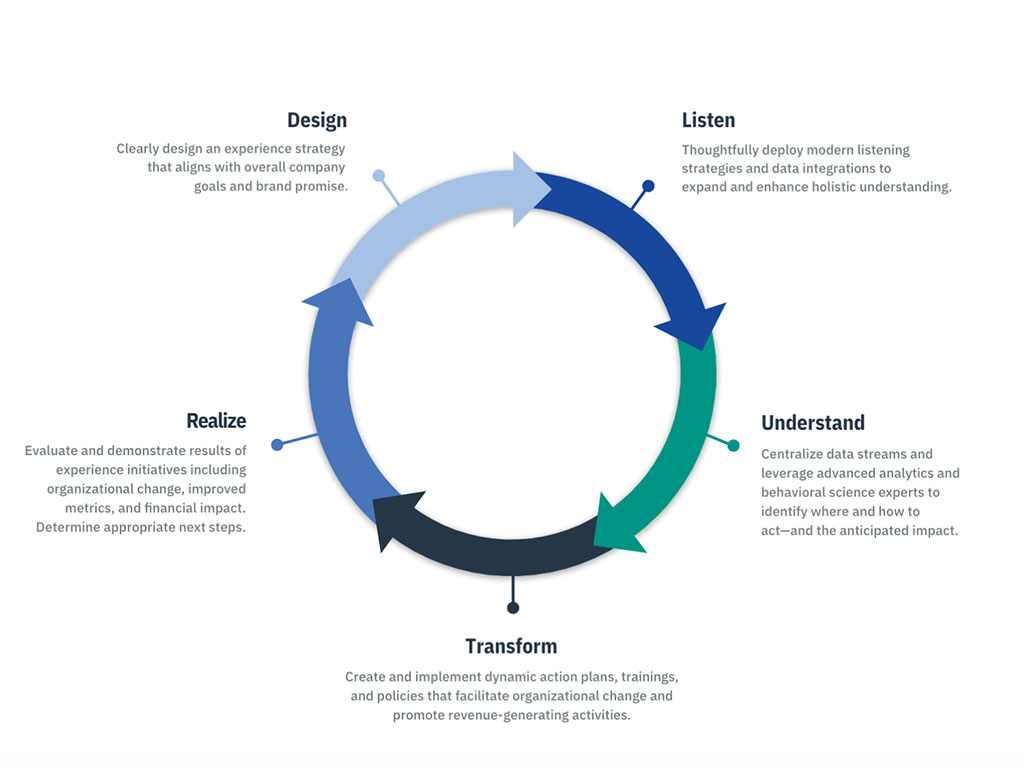
Many organizations are drowning in pools of untapped social data. Why? Because options to structure and analyze that data can be limited and even if businesses are able to compile that data, it often remains siloed from other data, such as voice of customer (VoC), call center, and more. That’s where InMoment’s game-changing customer social listening solution comes into play.
InMoment’s solution not only allows brands to access that data, but also to integrate that with other data sources, providing scalability and the deep, data-driven understanding that teams need to achieve their goals.
But don’t just take our word for it! Check out the three benefits real companies have realized leveraging InMoment’s customized social listening solution.
3 Benefits of Leveraging a Customized Social Listening Solution
Benefit #1: Greater Access to and Value from Social Data
Benefit #2: Structure Massive Amounts of Natural Language Feedback
Benefit #3: Effectively Filter Social Content to Only Extract Relevant Data
Benefit #1: Greater Access to and Value from Social Data
A consumer electronics brand who partnered with InMoment previously approached Voice of Customer by designing, distributing, and analyzing a wide range of surveys. The brand knew they needed to diversify and optimize their approach to customer experience (CX) to continue to improve, so they partnered with InMoment! Their new partnership allowed the company to integrate social media content with their VoC data. This push allowed them to:
- Reduce survey spend by substituting social signals where possible
- “True up” social data with survey responses to explore the feasibility of reducing their survey spend
- Identify common themes and correlations in the social data to use as a reliable, immediately-actionable proxy for customer survey responses
Benefit #2: Structure Massive Amounts of Natural Language Feedback
A leading architect firm has leveraged the InMoment platform to structure and analyze massive amounts of natural language feedback. The firm now has the ability to achieve a deep, data-driven understanding of customer experience in airports by mining omnichannel social media data from dozens of America’s airports. The result?
- A data-driven voice of customer program that can help win contracts and build airports that better serve stakeholders and travelers alike
- More meaningful and accessible analysis of social data via the platform’s intuitive functionality
And to top it all off? The customized social listening solution had a one week integration time, encompassing three data sources, 869,973 words, 30,000 travelers, and the top ten airports!
Benefit #3: Effectively Filter Social Content to Only Extract Relevant Data
Both brands we mentioned before had what many companies think they need: large amounts of data. But the problem with so much data is that it is difficult to find the signal through the noise and filter out the insights that will really make a difference. But with InMoment’s social listening solution’s ability to effectively filter out actionale, relevant data, these two companies were able to see incredible return on investment.
Here’s what the benefits look like:
- Run better surveys by identifying insight gaps
- Easily configure flexible one-off analyses while also establishing and validating long-term trends
- Help leadership teams make better-informed decisions around marketing and product strategy
When it comes to mining social data, working smarter, not harder is always the best route to take. Many companies struggle to grasp a true understanding of their client experience, thinking they have an ear to the ground because the data is rolling in. But all data is not created equal! That’s why it’s essential to have a customized social listening solution to unlock structured data, analyze for key insights, and capitalize on the most relevant opportunities.
Learn more about InMoment’s customized social listening solutions here!








